Close your eyes and think about ocean wildlife. What species pop to mind? Perhaps a majestic humpback whale singing into the deep, a green sea turtle paddling along a reef, or a great white shark hunting seals on the coast.
Our seas are filled with species that inspire awe and wonder — with good reason. But lurking in the depths are other creatures that are considerably less charismatic: Worm-like crustaceans that eat shark eyes, crabs that look like a yeti, and invertebrates that vomit their own intestines onto potential predators.
And despite their horrifying visages and bizarre habits, these creatures are no less awe-inspiring. Read on to learn more about some of the ocean’s strangest species.
Top 10 List
-
Cookiecutter Shark
Isistius brasiliensis
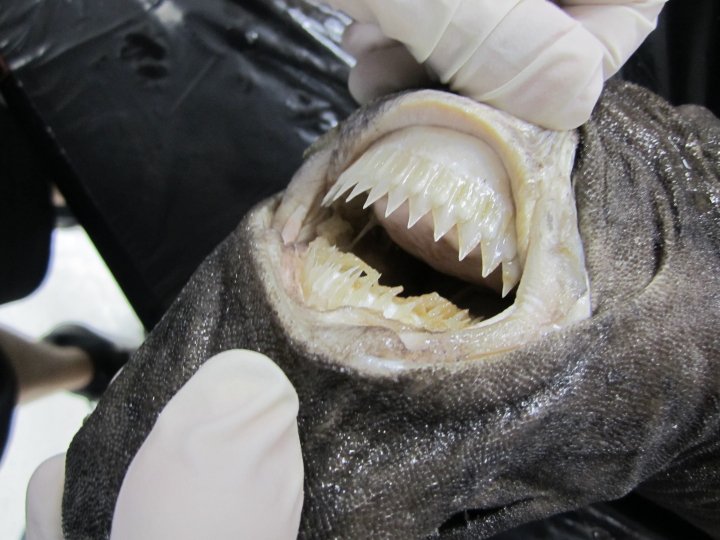
The teeth of a cookiecutter shark. © UBiology / Wikimedia Commons A great white shark, if you leave aside the movie hysteria, is an awesome beast. The cookiecutter shark? Much less so. Even though it only reaches 12-17 inches in length, for sheer creepiness it’s tough to beat.
It has a bulbous snout and cigar-shaped body. Its eyes look like something you’d see in a movie about zombie sharks. Its teeth are proportionally larger than any other shark species.
But it’s the cookiecutter’s feeding habits that are the stuff of nightmares.
Despite their small size, cookiecutter sharks attack much larger prey including seals, large fish, other sharks and even whales. They don’t kill the animal, instead chiseling off a chunk of flesh, leaving a crater behind.
Princeton University Press’s Sharks of the World describes it this way: “Once close enough, the Cookiecutter shark’s thick lips and modified pharynx are used to attach itself to the prey, then their razor sharp lower teeth cut into the skin and, with a twisting movement of the body, a plug of flesh is excised. The shark then pulls free, holding the plug by its hook-like teeth and leaving behind a crater wound.”
Some whales can have dozens of crater scars left by cookiecutter sharks. (MM)
-
Yeti Crab
Kiwa hirsuta
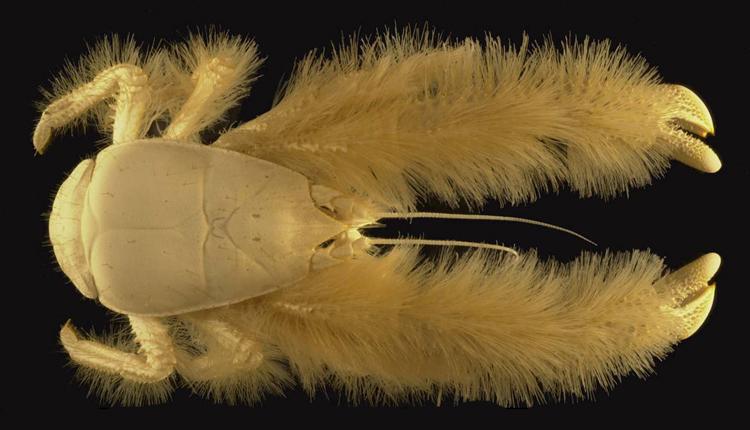
Yeti crab (Kiwa hirsuta) © Ifremer/A.Fifis At first glance, it looks like a particularly terrifying albino tick. Make that a 15 cm (about six inch)-long albino tick. With fur. Add the stubby claws (called chelipeds) at the end of those bristly arms, and, well, you have a Frankenstein mash up of arthropod parts that adds up to….a very strange-looking crab. Specifically, you have a Yeti crab.
Relatively new to science, the first Yeti crab (Kiwa hirsuta) was collected in 2005 along the Pacific-Antarctic Ridge, near Easter Island. The genus name, Kiwa, comes from Polynesian culture and alludes to a goddess of shellfish. The nickname, Yeti, comes from reasons that are pretty obvious. In the years since that first Yeti crab encounter, other species of Kiwa have been found in different parts of the Pacific.
Fortunately, (or unfortunately depending on your interests) it’s a crab you’re very unlikely to encounter at the beach since Yeti crabs live in the warm waters along hydrothermal vents in the Pacific Ocean at depths of about 2,200 meters (7,200 feet).
There has been debate about what and how they eat. They’ve been documented dining on open mussels, but their main source of sustenance may be best described as “better living through chemistry” and has to do with the hydrothermal vents and methane seeps where they’ve been found.
The bristles on their arms (called setae) are covered in bacteria that derive energy from chemical compounds in the gases of those vents and seeps. It’s a similar process to photosynthesis in plants that use sunlight to create energy. Essentially, Yeti crabs cultivate and harvest food—the bacteria—on their bodies. To eat the bacteria, they use their comb-like mouths to scrape it from their bristles. (See the Kiwa puravida dine on bacteria.)
To help the process of bacteria farming along, they wave their bristly arms in the gases flowing out of the vents. Apparently, it looks like a very strange dance of very strange crabs, like some kind of Yeti Crab disco in the abyss. Oh and if you were to eat one, it would probably taste like rotten eggs. (CCB)
-
Moray Eels
Muraenidae species
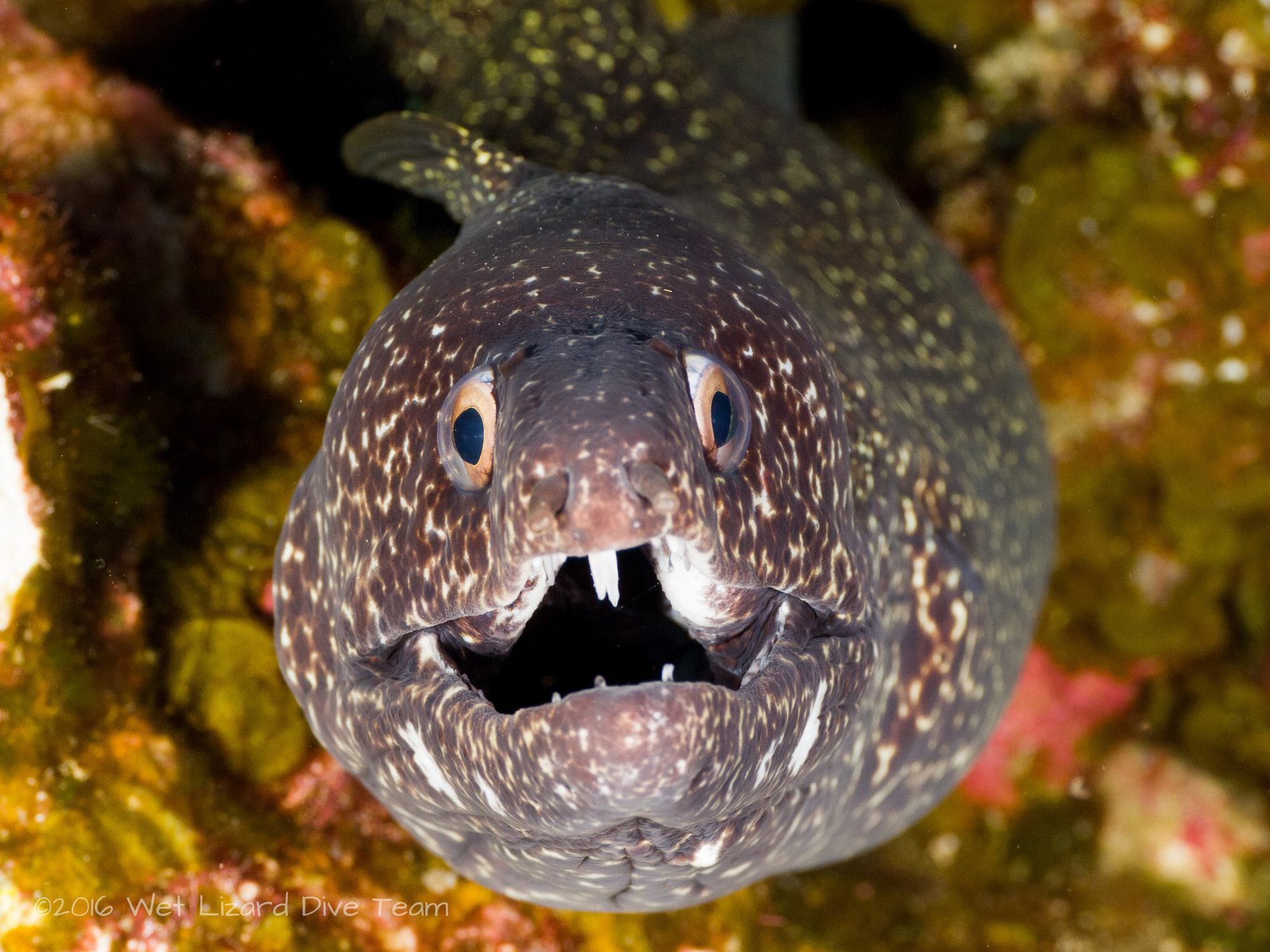
Peekaboo. © National Marine Sanctuaries / Wikimedia Commons Moray eels form a family of more than 200 species, most of which dwell in marine habitats. Some grow up to 10 feet long and as thick as a human’s thigh. Others look like floating ribbons and change their sex from male to female. Some are bright blue and yellow, others striped like a zebra or spotted like leopards.
Morays are known for their rather sinister grins, but don’t let that fool you. Morays don’t have external gill slits, so they have to open their mouths to breathe by pumping water over their gills. Another common misconception: moray eels can’t electrify you, although their freshwater friends in South America can give you a nasty shock. Many species secrete a protective, toxin-filled mucus over their skin, which helps protect them as they navigate the hard surfaces of the reef.
Morays feed on small fish, crabs, crustaceans, and octopuses. After locating prey, morays use a second set of jaws, called a pharangeal jaw, which they launch into their mouth cavity to help ensnare prey and pull it into the eel’s throat. One species, the giant moray, is known to hunt cooperatively with coral groupers, who invite the moray to join with a shake of their head. The two animals then roam along the reef, where the eel flushes out fish hiding in crevices too small for the grouper to reach. (JEH)
-
Hagfish
Myxinidae species
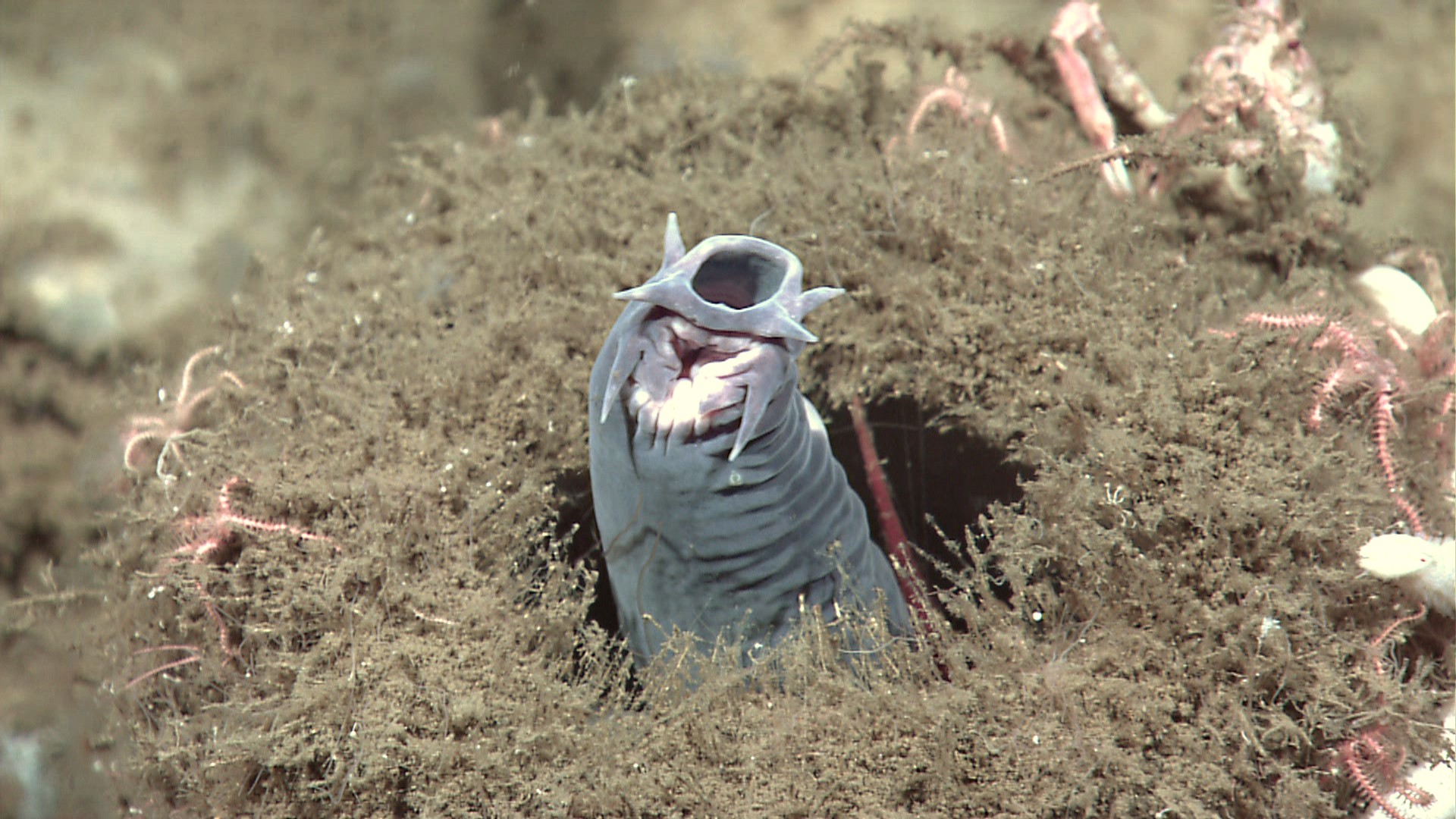
A hagfish protruding from a sponge near Santa Cruz Island, CA. © NOAA Okeanos Explorer Program The hagfish is quite possibly the only fish ever made famous by a traffic accident. It happened in 2017, in Oregon, when a truck carrying a whole lot of hagfish (bound for markets in South Korea) overturned on Highway 101 and provided a graphic demonstration of the hagfish’s epic ability to produce slime. Or, as the incomparable Ed Yong put it, “Hagfish produce slime the way humans produce opinions—readily, swiftly, defensively and prodigiously.”
It’s why they’re also known as slime eels. Except, hagfish aren’t eels. They’re very unusual bottom-dwelling jawless fishes that look like eels but are actually considered vertebrates—the only known vertebrates with a partial skull but no spinal column. It’s complicated.
With their tubular shape, loose skin (that can look like cheap velvet), freaky looking “teeth,” and gaping nose hole surrounded by barbels, hagfish are not particularly lovely and kind of look like Graboids from the 90s movie, Tremors. Except they’re much smaller. Depending on the specific species, hagfish can be anywhere from 40 to 100 cm (16 to 40 inches) long. They live in cold waters around the world, can go months without eating, and escape predators by choking them with a mouth (or gills) full of slime. But it’s their dietary habits that are the source of most hagfish disgust, fascination and curiosity. Though the slime is a very close second and an interesting subject on its own; I don’t have room here so I’m going with what they eat and the way they eat it.
Hagfish eat polycheate worms and small invertebrates. So far, so good. They’re also scavengers who can, with their cartilaginous bodies and a judicious use of slime, squeeze into and out of all kinds of dead (and mostly dead) things that fall to the ocean floor. Things like decaying whales, or fish or squid. (Video of hundreds of hagfish swarming a whale carcass in the BBC’s Blue Planet traumatized my son when he was in third grade.) They can burrow into a carcass and eat their way out, or they can start on the outside and tunnel through decaying flesh and organs as they feed.
They can, according to the Aquarium of the Pacific, even tie and untie themselves into knots to “create a ripping force” with their mouths. They’re among the most amazing and primitive creatures in the world and a source of endless interest. Seriously, that slime is a materials scientist’s dream substance. (CCB)
-
Ommatokoita
Ommatokoita elongata
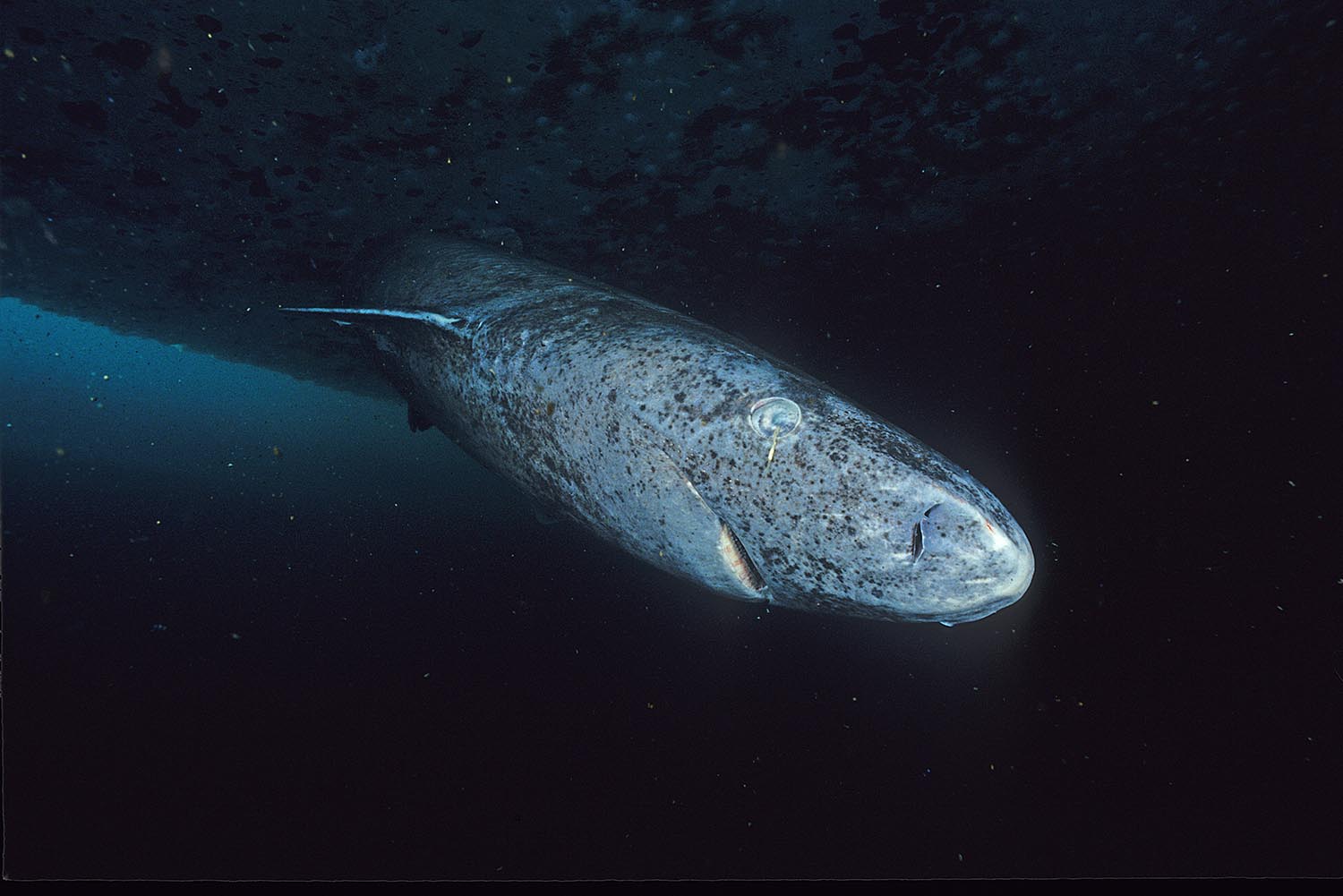
A Greenland shark with an ommatokoita trailing from is eye. © Hemming1952 / Wikimedia Commons The Greenland shark might be a candidate for this blog. It is undeniably a cool creature, arguably the longest living vertebrate (one recently caught female was estimated to be 400 years old). But Greenland sharks look a bit rough to human eyes. Biologist and author Tim Flannery describes them as “more of a deep-sea zombie.”
He continues: “Greenland sharks can look rotted—the skin of some is covered in patches of green algae-like matter with irregular black and pale areas, and their fins can appear stumpy and sometimes ragged.”
But it’s an external parasite of this shark that is far more disturbing. A copepod (a wormlike marine crustacean), Ommatokoita elongata, attaches itself to a Greenland shark’s eyes and eats its cornea. Most Greenland sharks have these wormlike parasites hanging off their eyes.
Flannery describes it as looking like two thick strands of spaghetti hanging off an eyeball. Other sources liken it to a graduation tassel. The parasite causes partial or total blindness. As a creature of the deep, the Greenland shark doesn’t rely on eyesight. But it’s difficult to ponder a cornea-eating crustacean and not wince. (MM)
-
Sea Cucumbers
Holothuroidea
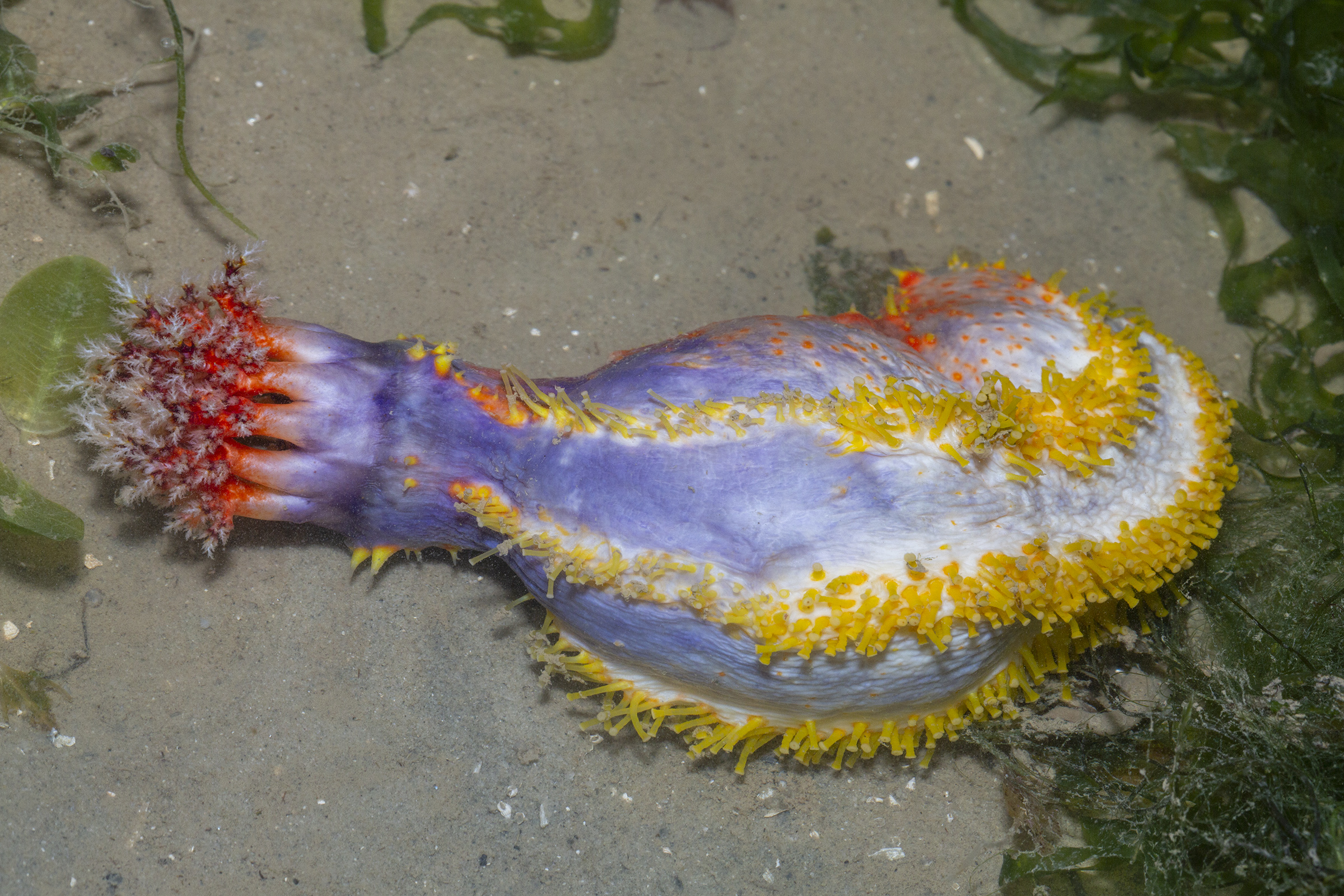
Sea apple sea cucumber, Pseudocolochirus violaceus. Photo © budak / Flickr Sea cucumbers are almost laughably absurd. Their body plan is little more than a digestive tract with a hole at either end, encased in squishy flesh. No face or eyes, no bones or cartilage, just a blob that crawls across the seafloor, vacuuming up sand and pooping it back out again.
You’d think such a creature would be utterly defenseless from predators, and yet evolution works in mysterious ways. Some species, like the sandfish, spend the day buried in the sand in a lame attempt at camouflage. Other sea cucumbers projectile-poop their internal organs over any would-be predators and then re-grow their body parts once they’ve avoided being eaten.
Sea cucumbers don’t have lungs or gills, so they breathe by dilating their anal sphincter to suck water into their rectum, where specialized structures called respiratory trees extract oxygen molecules from the water. But that’s not the only weird thing about a sea cucumber’s butt. Several species of parasitic pearlfish live inside sea cucumber rectums. Some are harmless, merely looking for a predator-free place to live. Others are decidedly less friendly, and feast on their host’s gonads from the inside.
Sea cucumbers are vital ecosystem engineers. Their feeding activity helps distribute nutrients and remove excess organic matter from the sediment and water, leading to more productive seagrass beds, and they also help provide the raw materials that corals need to grow their exoskeletons.
Check out this story to learn more about how TNC is working with communities in Papua New Guinea communities to protect sea cucumbers. (JEH)
-
Elephant Seals
Mirounga angustirostris & Mirounga leonina

A male northern elephant seal. © Wade Tregaskis / Flickr When I visited the northern elephant seal colony at California’s Ano Nuevo State Park, the seals were going through a catastrophic moult. This sounds bad, but it’s what elephant seals do. Basically, elephant seals shed all their hair at once, unusual among mammals.
The seals I watched and photographed looked a little ragged. But the young ones were still cute in that oversized-baby-seal kind of way.
But a big bull elephant seal — the southern species can weigh up to 8,800 pounds — is perhaps the least charismatic of the marine mammals. With a huge schnoz and battle-scarred blubber, it manages to be formidable, comical and grotesque at the same time.
Male elephant seals defend territories and harems during breeding season. This results in battling with bulls slamming into each other and roaring. Many develop calluses on their chest from these battles, and it’s not unusual for a fight to turn bloody. (MM)
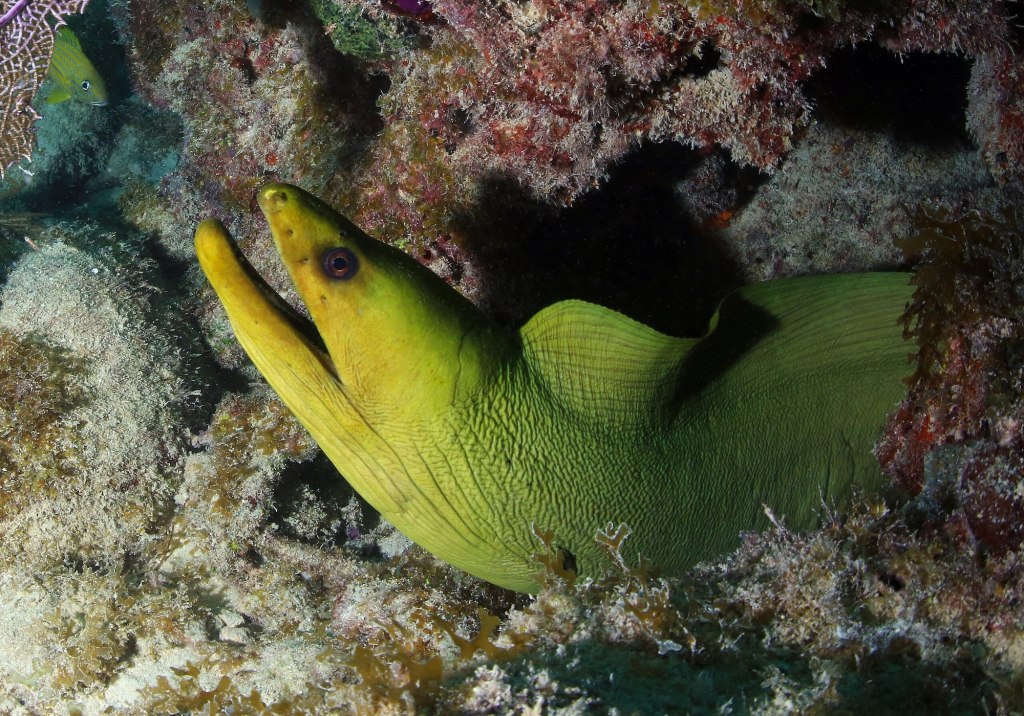



I think the Yeti crab is the strangest!
I vote for either shark as the coolest deep sea creatures (Cookie Cutter or Greenland). They’re remarkable and as we approach Shark Week it seems only right. Thanks for the amazing pics and tidbits.
I would like to thank Matthew Miller for the Cool Green Science blog and Justine Hausheer and Cara Byington for their writing. I read The Cool Green Science email no matter how busy I am. It is always fascinating.
Thank you so much for your kind comment! We love to hear from readers and appreciate you spending some of your time with us. Thanks again!~